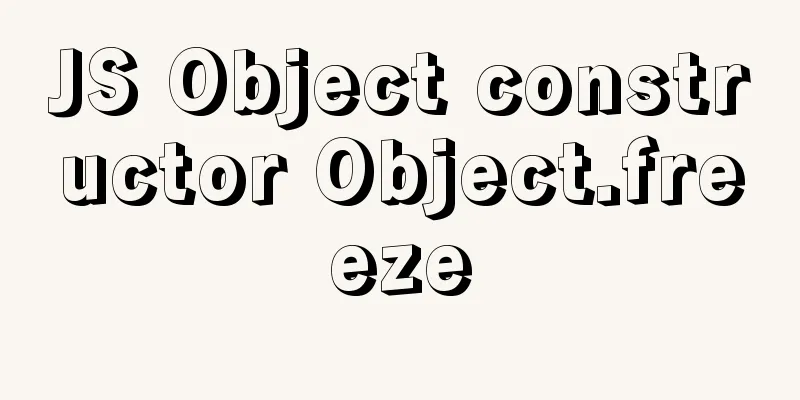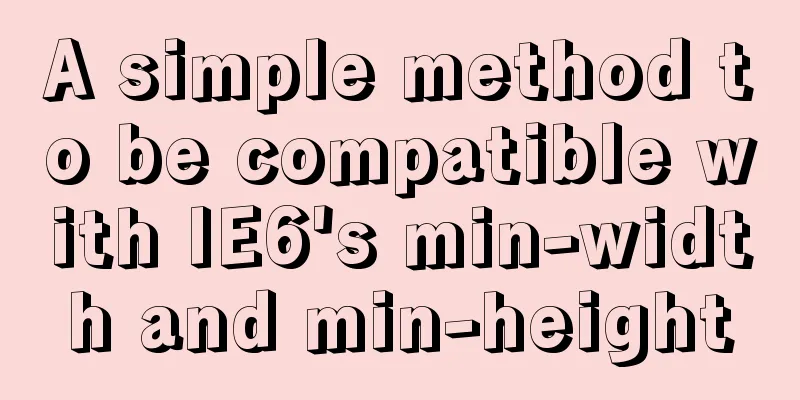JS Object constructor Object.freeze

OverviewObject.freeze(obj) can freeze an object. A frozen object can no longer be modified; If an object is frozen, you cannot add new properties to it, delete existing properties, modify the enumerability, configurability, and writability of existing properties, or modify the values of existing properties. In addition, after freezing an object, the prototype of the object cannot be modified. freeze() returns the same object as the argument passed in. JavaScriptDemo: Object.freeze()
const obj = {
Prop: 42
}
Object.freeze(obj)
obj.prop = 33 // Strict mode will throw an error.
console.log(obj.prop) // 42Example1) Freeze Object
var obj = {
prop: function() {},
foo:'bar'
}
// Both the object passed as a parameter and the returned object are frozen // so there is no need to save the returned object (because both objects are equal)
var o = Object.freeze(obj)
o === obj // true
// Any changes from now on will have no effect obj.foo = 'he' // Do nothing Obj.hxx = 'he' // Do not add this property // Try to change the property via Object.defineProperty // Both of the following statements will throw an exception Object.defineProperty(obj,'foo',{value:'yy'})
Object.defineProperty(obj,'sex',{value:'女'})
// The prototype cannot be changed either // The following two statements will throw an exception Object.setPrototypeOf(obj,{x:20})
Obj.__prorp__ = {x:20}2) Freeze the arraylet a = [0] Object.freeze(a) // Now the array cannot be modified a[0] = 1 // Failed a.push(2) // Failed A frozen object is immutable. But it’s not always like this. The following shows that the frozen object is not a constant object (shallow freezing) 3) Shallow freezing
let obj = {
internal: {}
}
Object.freeze(obj)
obj.internal.a = 'he'
console.log(obj.internal.a) // heTo make an object immutable, you need to recursively freeze every property of type object (deep freeze) 4) Deep Freeze
deepFreeze = (obj) => {
var propNames = Object.getOwnPropertyNames(obj);
propNames.forEach(function (name) {
var prop = obj[name];
if (typeof prop == 'object' && prop !== null) {
deepFreeze(prop);
}
});
Object.freeze(obj);
}
deepFreeze1 = (obj) => {
var prop, propName
Object.freeze(obj)
for (propName in obj) {
prop = obj[propName]
if (!obj.hasOwnProperty(propName) || !(typeof prop === "object") || Object.isFrozen(prop)) {
// Skip properties on the prototype chain and frozen objects.
continue
}
deepFreeze1(prop)
}
}The use of deep freeze is usually when we need a property, but it is empty or does not exist at the beginning, then you just need to set some initial value title: "Floor Sales", value: "", options: [], The meaning of existenceIf you have a huge array or Object and are sure that the data will not change, using Object.freeze() can significantly improve performance. Object.freeze() freezes the value, you can still replace the reference to the variable.
new vue({
data: {
// Vue will not bind getters and setters to objects in the list list: Object.freeze([
{ value: 1 },
{ value: 2 }
])
},
mounted () {
// The interface will not respond this.list[0].value = 100;
// The following two methods will respond to this.list = [
{ value: 100 },
{ value: 200 }
];
this.list = Object.freeze([
{ value: 100 },
{ value: 200 }
]);
}
})The above is the detailed content of Object.freeze of JS Object constructor. For more information about JS Object.freeze, please pay attention to other related articles on 123WORDPRESS.COM! You may also be interested in:
|
<<: Java+Tomcat environment deployment and installation process diagram
>>: Ten useful and simple MySQL functions
Recommend
How to obtain a permanent free SSL certificate from Let's Encrypt in Docker
1. Cause The official cerbot is too annoying. It ...
Docker container time zone error issue
Table of contents background question Problem ana...
MySql8 WITH RECURSIVE recursive query parent-child collection method
background When developing a feature similar to c...
vue uses Ele.me UI to imitate the filtering function of teambition
Table of contents Problem Description The general...
Docker deploys mysql remote connection to solve 2003 problems
Connecting to MySQL Here I use navicat to connect...
Share MySql8.0.19 installation pit record
The previous article introduced the installation ...
A brief analysis of how to upgrade PHP 5.4 to 5.6 in CentOS 7
1. Check the PHP version after entering the termi...
Solution to invalid margin-top of elements in div tags
Just as the title says. The question is very stran...
Detailed explanation of the process of building an image server with nginx (the difference between root and alias)
The installation process is omitted (I installed ...
Mysql Sql statement exercises (50 questions)
Table name and fields –1. Student List Student (s...
Examples of correct use of interface and type methods in TypeScript
Table of contents Preface interface type Appendix...
Simple tips to increase web page loading speed
The loading speed of a web page is an important in...
Detailed explanation of MySQL information_schema database
1. Overview The information_schema database is th...
JS realizes automatic playback of timeline
Recently, I have implemented such an effect: clic...
Analysis of Facebook's Information Architecture
<br />Original: http://uicom.net/blog/?p=762...









